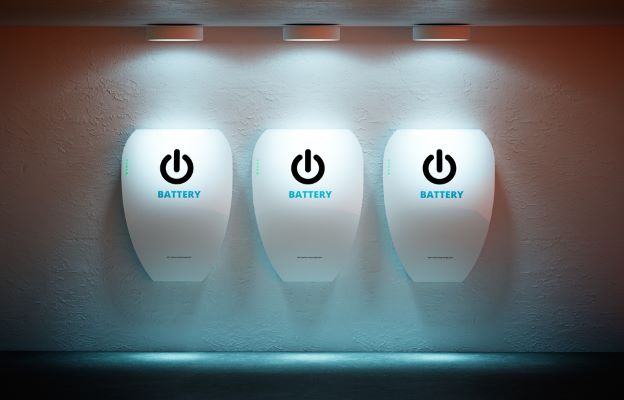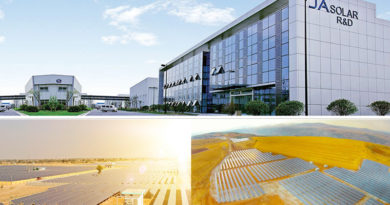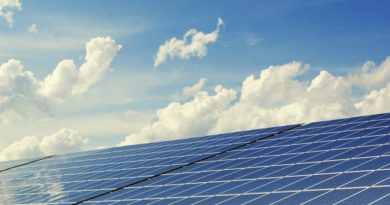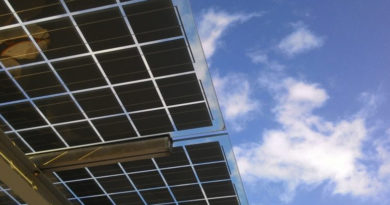Focus on Energy Storage: The Technologies Leading the Charge

To read the first part of this series, click here.
So just what are the options out there for storage at scale? We take a look at the key ones.
Solid state batteries. These include electrochemical capacitors, Lithium-Ion (Li-Ion) batteries, Nickel Cadmium Batteries (Ni-CD), and Sodium Sulfur (NaS) batteries. The Tesla Powerwall, Powerpack, and now the Megapack are of course well known for their residential, industrial, and grid level promise now. With their Lithium-Ion rechargeable platforms, these storage options have moved beyond the home sometime back. The Powerwall, which was the heavy lifting version till the Megapack announcement this week, grabbed the headlines last year with the 129 MW installation in Australia at the Hornsdale Wind Farm, where it proved its role as a load balancer to stabilize the grid in case of sudden drops in power generation elsewhere. Lithium-Ion batteries are set to get a further boost thanks to the push for automotive battery manufacturing for electric vehicles, which will ensure a continuous drop in prices. Despite the regular alarms over lithium supplies.
For now, Florida Power and Light’s (FPL ) Manatee Energy Storage Center, a 409-MW/900-MWh battery storage facility, would begin operations in late 2021. Charged by an existing FPL solar power plant in Manatee County, Florida, the new facility would have four times the storage capacity of the world’s current largest solar battery system at the Hornsdale Power Reserve in Australia by Tesla.
However, even the older Sodium Sulfur technology is not to be scoffed at, as proved by the commissioning of the world’s largest existing battery storage facility based on the technology, at Abu Dhabi, UAE.
Next we have Pumped hydroelectric storage that works by pumping water from a lower to a higher place on windy or sunny days when regular renewables might suffice, then letting it fall and drive turbines when demand for energy increases. When the need for energy is reduced, the water is then transferred back up into the higher reservoir usually by the same turbines, which can act as both pump and generator. Much like a hydro-electric dam, the biggest issue here is the space required for reservoirs, though pumped storage remains one of the most cost effective option for energy storage out there. The U.S., with a special affinity for pumped hydro, has the world’s largest such project – the Bath County Pumped Storage Station. This is a pumped storage hydroelectric power plant, often described as the “largest battery in the world” with a maximum generation capacity of 3,003 MW, an average of 2,772 MW, and a total storage capacity of 24,000 MWh.
PHS, as it is called, has a global capacity of 140GW already in place, accounting for well over 90% of global storage capacity for now. With with its sheer scale, and its capacity for longer duration supply, it has an edge over Lithium-Ion batteries that is significant at scale.
Thanks to existing water storage infrastructure and its well understood engineering principles, pumped storage is set to play a major role, with hundreds of projects under execution worldwide. In India, 2.6Gw of pumped storage capacity is already operational, with the Kadamparai facility in Tamil Nadu at 400 MW the largest.
Hydrogen cell, or Redox flow batteries, where solid electrodes are replaced with energy-dense electrolytic compounds (hydrogen-lithium bromate, bromine-hydrogen, organic, etc.) separated by a membrane that charge and discharge as the liquids circulate in their own respective space. Ion exchange occurs through the membrane separator when the electrolytes undergo reduction and oxidation (redox) and in turn can store large amounts of energy, perfect for tying into the grid. With compact sizes, and a high energy output, these are being tried across the spectrum, from transportation to industry. As of now, applications in the railways sector have been particularly interesting.
An interesting option that has been around for a while is the Flywheel energy storage option. This operates by accelerating a rotor to high speed and maintaining the power as rotating energy. Thus, when energy is required and drawn, the flywheel rotational speed is reduced and accelerated when energy is reintroduced as storage. Multiple projects based on the technology are being implemented across university labs and elsewhere, with high hopes of a breakthrough on costs and efficiencies soon.
Advanced flywheel systems are high-strength composite rotors suspended by magnetic bearings, and when power is introduced, they can spin up in a matter minutes to 20,000 to 50,000 RPMs, reaching their energy capacity more quickly than other forms of storage. Swiss energy group ABB recently implemented a flywheel/smart microgrid solution in Kodiak Alaska for renewable energy expansion opportunities and grid stability.
And then we have Compressed Air energy storage (CAES). These plants are similar to pumped hydro power plants; only instead of pumping water from a lower to an upper pond, air is compressed and stored under pressure in underground caverns to store energy. When that energy is required, the pressurized air is heated and expanded in a turbine, thus driving a generator for power production. In recent news, Canadian company Hydrostor received approval to build the first grid-scale compressed air energy storage system in Australia. Hydrostor will be deploying a 5MW / 10MWh system at a former zinc mine near Strathalbyn, South Australia. The advanced compressed air energy storage (A-CAES) project, expected to cost AU$30 million (US$21.09 million) in total, received development approval in July , 2019.
Thermal energy storage, which includes systems like latent energy storage and thermal-chemical is not unfamiliar to people in the solar industry. Concentrated Solar Power plants have used these, including some large projects in the middle east, including Saudi Arabia, besides Africa. Thermal storage in fact has found a perfect pairing with solar power plants. A sensible heat system uses a liquid or solid medium: Water, sand, rocks or molten salt like ammonia are either heated or cooled to store collected energy. A great example is the storage system used by Solar Reserve in Nevada, where its Crescent Dunes project uses molten salt to store 1,100 MW of power in two massive thermally shielded metal tanks, and can store that energy for 40 years with no degradation.




